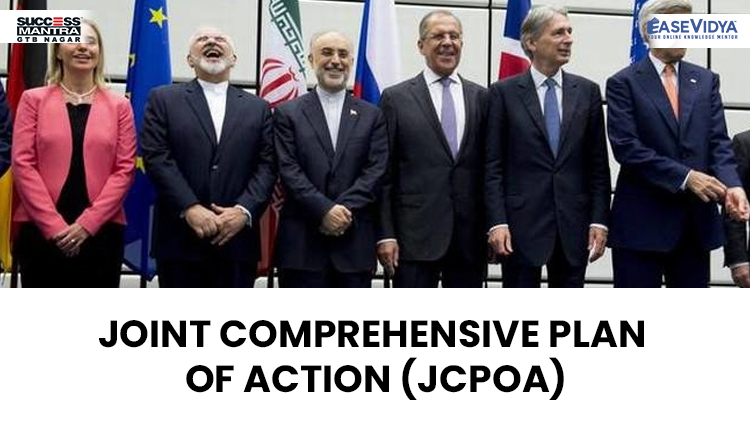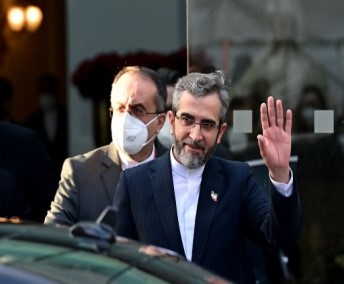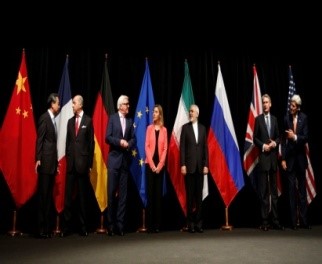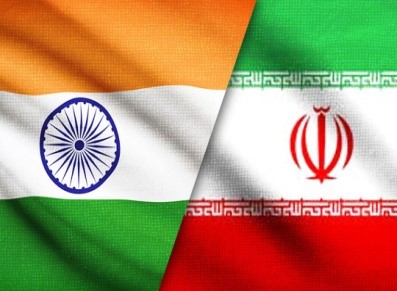
JOINT COMPREHENSIVE PLAN OF ACTION JCPOA
JOINT COMPREHENSIVE PLAN OF ACTION (JCPOA)
Recently, the US has restored sanctions waivers to Iran to allow international nuclear cooperation projects, as indirect American-Iranian talks on reviving the 2015 international nuclear deal with Iran enter the final stretch. The waiver allows other countries and companies to participate in Iran’s civilian nuclear programme without triggering US sanctions on them, in the name of promoting safety and nonproliferation. The waivers were revoked by the United States in 2019 and 2020 under former President Donald Trump, who pulled out of the nuclear agreement. The agreement is formally called the Joint Comprehensive Plan of Action (JCPOA).

Current Affairs Notes By Success Mantra Coaching Institute GTB Nagar Delhi CLICK HERE
WHAT IS THE TIMELINE & BACKGROUND OF JCPOA?
The JCPOA was the result of prolonged negotiations from 2013 and 2015 between Iran and P5+1 (China, France, Germany, Russia, the United Kingdom, and the United States). It happened due to the backchannel talks between the US (President Barack Obama) and Iran, quietly brokered by Oman, in an attempt to repair the accumulated mistrust since the 1979 Islamic revolution. Islamic Revolution, also called Iranian Revolution, popular uprising in Iran in 1978–79 that resulted in the toppling of the monarchy on 11th February, 1979, and led to the establishment of an Islamic republic. The JCPOA obliged Iran to accept constraints on its uranium enrichment program verified by an intrusive inspection regime in return for a partial lifting of economic sanctions. However, faced with a hostile Republican Senate, President Obama was unable to get the nuclear deal ratified but implemented it on the basis of periodic Executive Orders to keep sanction waivers going. When Donald Trump became president, he withdrew from the deal and called it a “horrible, one sided deal that should have never, ever been made”. The US decision was criticized by all other parties to the JCPOA (including the European allies) because Iran was in compliance with its obligations, as certified by the International Atomic Energy Agency (IAEA).
WHAT WILL BE THE IMPACTS OF RESTORATION OF JCPOA?
Restoration of JCPOA may ease many restrictions over the Iranian regime, which may directly or indirectly help India.
This can be reflected in the following examples:
Boost to Regional Connectivity: Removing sanctions may revive India’s interest in the Chabahar Project, Bandar Abbas port, and other plans for regional connectivity. This would further help India to neutralize the Chinese presence in Gwadar port, Pakistan. Apart from Chabahar, India’s interest in the International North-South Transit Corridor (INSTC), this runs through Iran, which will improve connectivity with five Central Asian republics, may also get a boost.

RELATED: NON-PROLIFERATION TREATY & INDIA’S STAND
Year 2020 marked the 50th anniversary of the entry-into-force of the Treaty on the Non-Proliferation of Nuclear Weapons (NPT), a legal instrument treated as the cornerstone of the global nuclear nonproliferation regime. The treaty institutionalised the non-proliferation norm by de-legitimising ‘proliferation’ (production and transfer) of nuclear weapons, fissile materials and related technology by the non-nuclear weapon states (NNWS) while the recognised five nuclear-weapon states (NWS) — namely the US, Russia, the UK, France and China, can continue to possess nuclear weapons. The Treaty can be described to have three objectives of non-proliferation, disarmament and peaceful uses of nuclear energy. However, NNWS criticised this treaty for having structural flaws and viewed it as an imbalanced instrument. Nevertheless, the treaty has attained a near-universal status with just four hold-outs — India, Pakistan, Israel and North Korea and it is widely acknowledged that having a treaty to halt the spread of nuclear weapons was better than having none at all.
INDIA'S STAND ON NPT
India is one of the only five countries that either did not sign the NPT or signed but withdrew, thus becoming part of a list that includes Pakistan, Israel, North Korea, and South Sudan. India always considered the NPT as discriminatory and had refused to sign it. India has opposed the international treaties aimed at non-proliferation since they were selectively applicable to the non-nuclear powers and legitimised the monopoly of the five nuclear weapons powers.
Countering America’s Adversaries Through Sanctions Act (CAATSA)
Enacted in 2017, it is a US federal law that imposed sanctions on Iran, North Korea and Russia. Includes sanctions against countries that engage in significant transactions with Russia’s defence and intelligence sectors. The Act empowers the US President to impose at least five of the 12 listed sanctions on persons engaged in a “significant transaction” with Russian defence and intelligence sectors. Its “ultimate goal”, “is to prevent revenue from flowing to the Russian Government.
INTERNATIONAL ATOMIC ENERGY AGENCY (IAEA)
- Widely known as the world’s “Atoms for Peace and Development” organization within the United Nations family, the IAEA is the international centre for cooperation in the nuclear field.
- Establishment: The IAEA was created in 1957 in response to the deep fears and expectations generated by the discoveries and diverse uses of nuclear technology.
- Headquarter: Vienna, Austria.
- Objective: The Agency works with its Member States and multiple partners worldwide to promote safe, secure and peaceful use of nuclear technologies. In 2005, it was awarded the Nobel Peace Prize for their work for a safe and peaceful world.
MAJOR POINTS RELATED TO INDIA –IRAN RELATIONSHIP
FARZAD-B GAS FIELD
It is located in the Persian Gulf (Iran). The contract for exploration of the field was signed in 2002 by an Indian consortium comprising ONGC Videsh, Indian Oil Corporation and Oil India. The contract expired in 2009 after declaration of commerciality of the field, based on the gas discovery. It has gas reserves of more than 19 trillion cubic feet. ONGC has invested approximately USD 100 million. Since then, the consortium has been trying to secure the contract for development of the field. The major dispute between India and Iran was over setting up of two pipelines, and also over money to be quoted on the development plan. Around 75% of the deal was finalised by May 2018, when the USA unilaterally withdrew from the nuclear deal and announced sanctions on Iran. In January 2020, India was informed that in the immediate future, Iran would develop the field on its own and would like to involve India appropriately at a later stage.

CHABAHAR-ZAHEDAN RAILWAY NETWORK
In the ‘New Delhi Declaration’ signed in 2003, both countries had decided to jointly develop the Chabahar Port complex. The Port development was exempted from the sanctions. India’s main investment in the Chabahar Port where it has taken over operations of one terminal, had progressed well in the last few years, handling 82 ships with 12 lakh tonnes of bulk cargo in 8200 containers since December 2018. A contract to develop the 628-km railway line (Chabahar-Zahedan) along the Iran-Afghanistan border was signed in 2016. IRCON was appointed by the Government of India to assess the feasibility of the project. It was working with CDTIC, an Iranian company. It had completed the site inspection and review of the feasibility report. The Iranian side was to nominate an authorised entity to finalise outstanding technical and financial issues. India waited for the same. However, Iran started work on the railway project in July 2020. India is not part of this project as of now since there is lack of clarity on whether it will attract the USA sanctions. However, it has conveyed to Iran that it is open to joining the project later.
PRAVAHINI Current Affairs Notes By Success Mantra Coaching Institute GTB Nagar Delhi CLICK HERE
TEST YOURSELF
Q.1 Recently, which of the following countries have restored sanctions waivers to Iran to allow international nuclear cooperation projects?
- United States of America: ANSWER
- Russia
- China
- United Arab Emirates
Q.2 The JCPOA was the result of prolonged negotiations from 2013 and 2015 between Iran and P5+1. Which of the following nations is not a part of P5+1?
- Germany
- United Kingdom
- United States of America
- India: ANSWER
Q.3 Consider the given statements in the reference to the International Atomic Energy Agency (IAEA) & state which of the following is/are incorrect?
- The Agency works with its Member States and multiple partners worldwide to promote safe, secure and peaceful use of nuclear technologies.
- In 2020, it was awarded the Nobel Peace Prize for their work for a safe and peaceful world: ANSWER
- The Secretariat of the International Atomic Energy Agency (IAEA) is located in Vienna, Austria.
- None of the above-mentioned
Q.4 Which of the following statements is incorrect in the context of the above mentioned passage?
- Restoration of JCPOA may impose many restrictions over the Iranian regime which will hamper the India-Iran relationship: ANSWER
- Traditional Shia vs Sunni conflict precipitated into a regional cold war between Iran & Suadi Arabia which acts as roadblock to the JCPOA agreement.
- Through the agreement Iran can pressurize those countries to buy oils who were buying from Iran when it was not under sanctions.
- None of the above
Q.5 Which of the following projects has been developed by India in close contact with Iran to boost regional connectivity and bilateral partnership between these countries?
- Chabahar Port
- Bandar Abbas port
- Gwadar Port
- Both I & II: ANSWER












wtrcvawyko
Muchas gracias. ?Como puedo iniciar sesion?